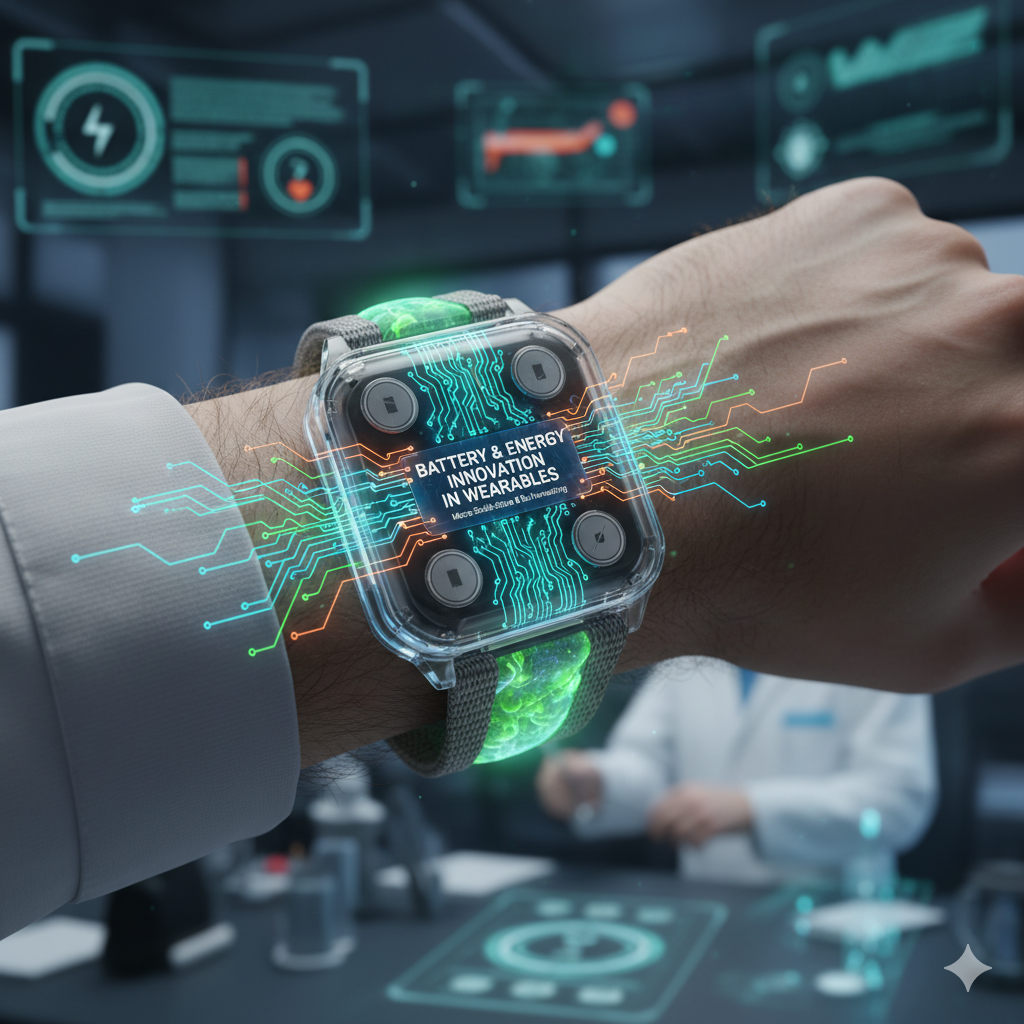Smartwatches, fitness bands, and smart rings have become a part of our everyday routines. These wearable gadgets keep tabs on our health, display alerts, and even run applications. Yet, one issue continues to frustrate every user—battery life.
Charging a watch isn’t something people want to do. This explains why tech firms now focus on battery and energy breakthroughs. The wearables of tomorrow will stay powered longer, thanks to everything from more efficient chips to devices that charge themselves.
📌 The Importance of Battery Life in Wearables
Wearables come in small packages, so they can’t house big batteries like phones. Yet, they need to run several features such as:
- Heart rate and SpO2 tracking
- GPS navigation
- Bluetooth & Wi-Fi
- Notifications & apps
When batteries don’t work well, people have to charge their devices every day—or the devices get too big. That’s why energy breakthroughs play a crucial role in shaping the future of wearable tech.
🚀 New Battery & Energy Technologies
1. Better Battery Materials
- Solid-State Batteries: Pack more energy into smaller spaces helping wearables run longer.
- Graphene Batteries: Charge up faster and last longer than the lithium-ion batteries we use now.
👉 Example: We might soon see a smartwatch that charges in minutes and keeps running for a week.
2. Self-Charging Wearables
Think about a watch that powers up as you wear it. This idea is turning into reality:
- Solar-Powered Watches: Some Garmin and Casio models already use sunlight to make their batteries last longer.
- Kinetic Energy: Wearables of the future might recharge when you walk or run.
- Body Heat Energy: Special sensors could turn your body’s warmth into power.
3. Low Power Chips & Displays
Engineers design new processors and displays to use less power:
- Ultra-Low Power Processors run many sensors without draining the battery.
- OLED and E-Ink Displays use very little energy while staying bright and easy to read.
👉 Expect thinner gadgets with improved displays that conserve battery life.
4. Quick & Cordless Powering Up
Charging technology is evolving:
- Magnetic Cordless Powering is now standard in many smartwatches.
- Quick Powering provides a full day’s juice in just 10–15 minutes.
- Through-the-Air Powering is under development—picture powering up your gadget without cords or docks.
5. AI-Driven Power Conservation
Artificial Intelligence (AI) helps to save energy by understanding your patterns:
- Reduces GPS updates when you’re stationary.
- Tweaks screen brightness on its own.
- Stops background apps when they’re idle.
👉 The outcome: Your wearable runs longer with the same battery size.
🎯 How Users Benefit
Battery breakthroughs do more than change numbers—they make wearables more practical:
- Extended Battery Life → You might charge less often, with some gadgets lasting weeks.
- Thinner Designs → Better efficiency and smaller batteries lead to lighter comfier devices.
- Earth-Friendly → Batteries that last longer cut down on charging and e-waste.
📝 Wrapping Up
Battery and power breakthroughs are set to shake up the wearable tech world. As solid-state batteries, self-charging wearables, and smart power management become real, expect devices that last longer, think smarter, and treat the planet better.
Soon, you might not need to charge your smartwatch . The upcoming smartwatches could power themselves—making them easy to use all the time.
